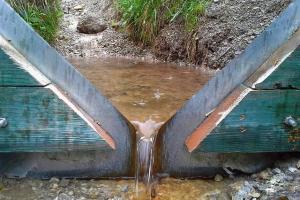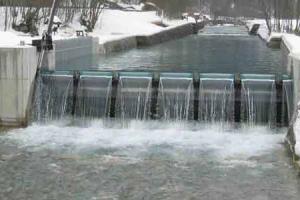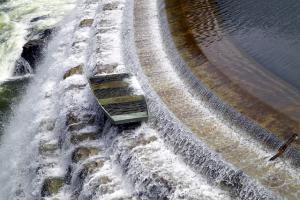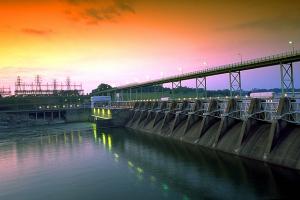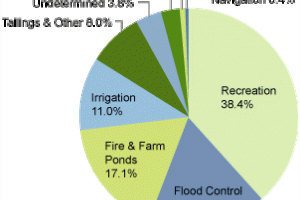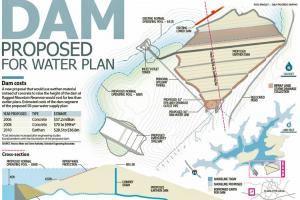Reinforced Concrete Rock Fill Dams

Rock fill dams are considered to be one of the durable types of dams and can be very economical depending upon the availability of materials to be used in Dam. More rock fill dams have been faced with conventionally placed reinforced concrete than with any other type of impervious membrane. In most cases, these facings have performed well for correctly compacted rock fill embankments, leakage has been within acceptable limits, and repairs have been minor.
Slab thickness and reinforcing requirements have usually been determined by experience or precedent to satisfy the following criteria:
- Low permeability
- Sufficient strength to bridge subsided areas of the face
- High resistance to weathering
- Sufficient flexibility to tolerate small embankment settlement
Compacted rock filled dams have considerably reduced embankment settlement, and the use of a well-compacted facing layer, which acts as a continuous, firm bedding surface for the concrete face, has reduced the bridging requirements of the face. For a small dam on a stable foundation, a reinforced concrete slab with a minimum thickness of 8 inches is recommended. The concrete should be dense, durable, weather resistant, and have low permeability (based on concrete mix designs). If foundation settlement could occur, or if other factors such as earthquake conditions exist, it would be wise to increase the membrane thickness.
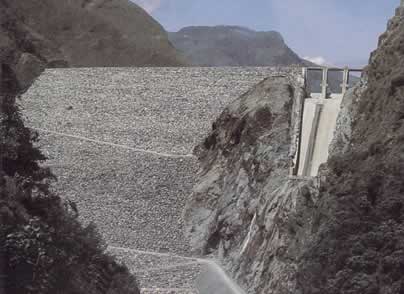
The amount of steel reinforcing should meet the generally accepted requirements, 0.5 percent of the concrete area. The reinforcing should be placed both horizontally and vertically in a single layer in the center of the slab. Because of the low reservoir head and the small amount of settlement expected, horizontal or vertical expansion joints are normally not required in the reinforced concrete facings for low dams. Vertical joints may be required to compensate for horizontal expansion on low dams of considerable length and are often used to facilitate construction of the face. Polyvinyl chloride or rubber water stops should be used to ensure impermeability along the joints.
The type of cutoff between the concrete facing and the foundation depends on the quality of rock encountered. For sound rock, the doweled cutoff slab has demonstrated its adequacy and economy, whereas, in closely jointed, weathered rock, or rock of questionable quality, a cutoff wall should be used. Water stops should be used between the cutoff and the facing. Because concrete facings provide little resistance to wave runup, increased freeboard is required to prevent wave runup and over splash.
Coping or parapet walls may be used to reduce the height of embankment required for free-board purposes. These walls should be constructed as integral continuations of the concrete face and reinforced accordingly. Coping walls work well. Practical research shows that in one case, walls 10 feet high have stored water to 8 feet without harmful effects, although this procedure is not recommended for the types of structures considered here. When coping walls are used for run up and over-splash protection, freeboard requirements of the embankment can be less than those for an earthfill dam.The design top of the rockfill should be above the maximum water surface.
The height of the coping wall can be determined either by precedent or the designer's experience. The spillway should be designed so that its capacity increases rapidly as the reservoir surface begins to encroach on the coping walls. Concrete has generally been placed by the same slip-forming process used in road construction, but in some cases shotcrete has been used effectively. Placement of the concrete membrane should not begin until the entire embankment has been placed; this allows maximum construction settlement and reduces the possibility of cracking and excess leakage. If concurrent slab placement is necessary to complete the job on time, an experienced dam designer should be consulted. Concrete overruns could occur as a result of the voids in the facing layer and should be accounted for in estimating the quantities.



